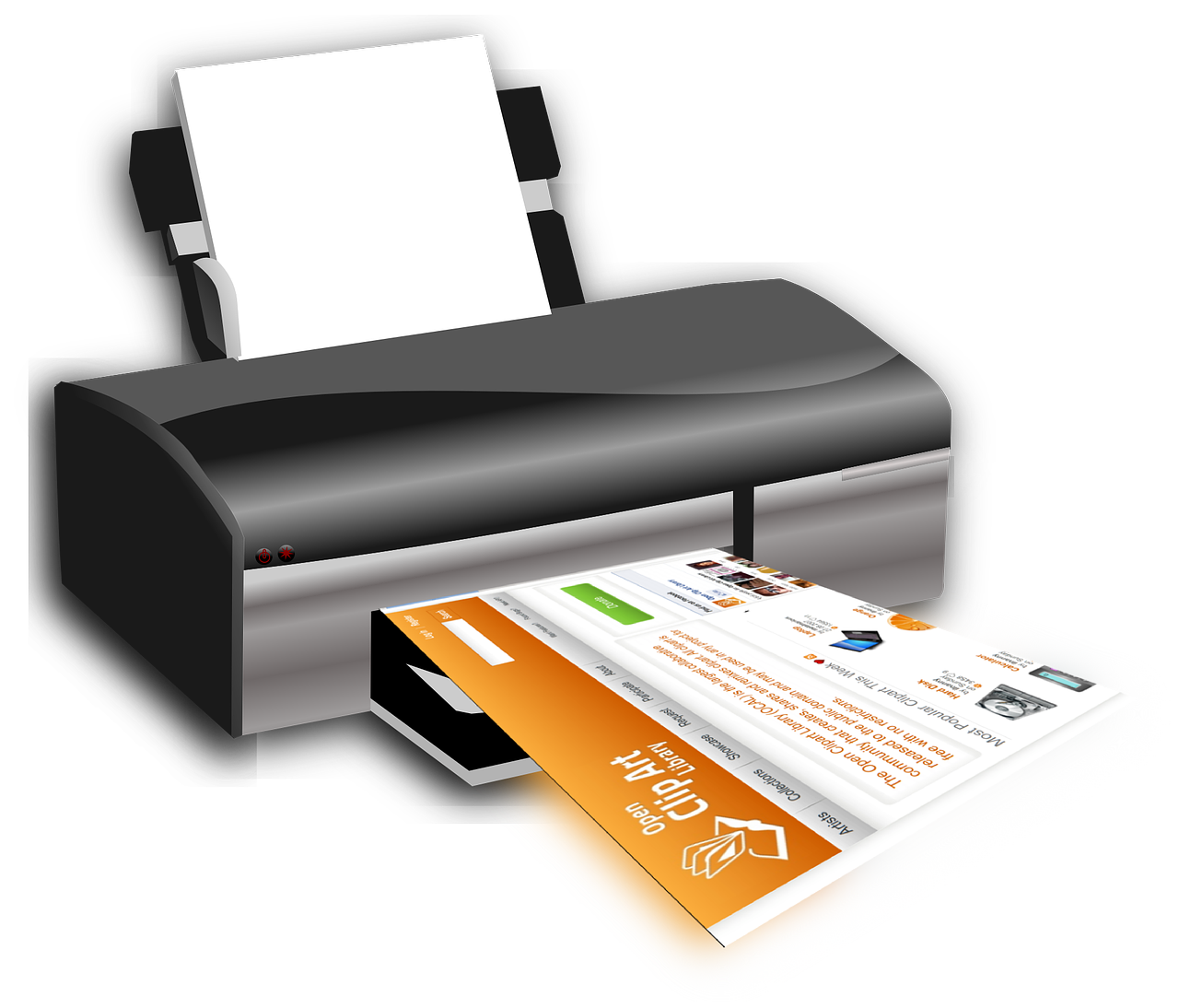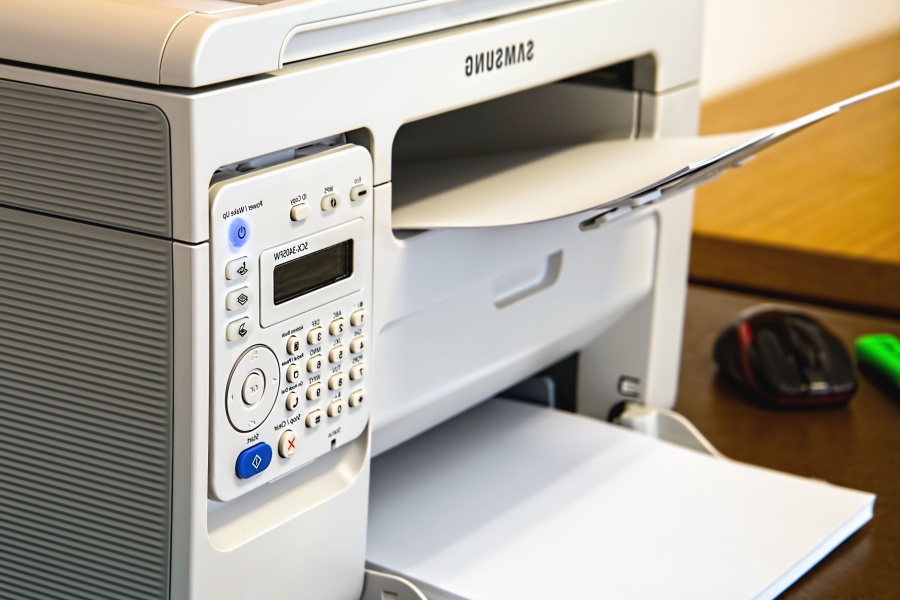Multi Function Printer: Functions, Printing, Price
There are 3 types of printers: mono function, multifunction, and photo. The multifunction printer combines the functions of a printer, scanner, and photocopier; it is in this case called “3 in 1”.
Some multifunction printers also have the fax function; they are called “4 in 1” or “4 devices in 1”.
Whatever their technology, laser or inkjet, multifunctional printers are becoming more and more efficient and their prices more and more competitive.
The printer function
The printer function of a multifunction printer offers the same possibilities as a simple mono function printer.
As for the traditional printers, there are multifunction printers that print in A3 format.
To ensure the quality of the printing function of your multifunction printer, here are the 2 main selection criteria:
The quality of printing:
It corresponds to the resolution and is expressed in dpi (dots per inch): the number of dots that the printer can write on the support at a distance of 2.54 cm, that is, one inch.
The standard minimum is considered as follows: 300 dpi for a black and white text and 600 dpi for a color image.
For information, most multifunction printers have a resolution that can reach 5760 X 1440 dpi (black and white) and 9600 X 2400 dpi (color).
The speed of impression:
This is expressed in pages per minute (ppm), sometimes in images per minute (ipm). According to your use, it can be an essential criterion.
According to the technology, a standard speed in black and white corresponds to: 10 ppm in inkjet; 18 ppm in laser; 1 ppm in thermal.
For information, the best printers (laser) have a speed higher than 40 ppm.
The two criteria above depend directly on the laser or inkjet printing technology and the monochrome or color.
Note: Regarding quality or accuracy, the exact terms are “dots” for printing and “pixels” for scanning. However, on the majority of the product sheets, the resolution is expressed in dpi or ppp.
The scanner function
The scanner function allows you to scan a document (text, slide, photo, etc.) to obtain a digital file; the most common formats accepted are PDF files or photo files (PNG, JPEG, etc.)
Some options or advanced functions allow you to send this file directly by email.
The main selection criterion is the scanning quality:
It corresponds to the scanning resolution and is expressed in dpi (dots per inch); it indicates the number of pixels scanned on a medium and displayed on the screen.
The typical values: 300 dpi are necessary for a text document; at least double that for a color photo; 4800 x 1200 dpi for a color photo.
The scanning speed is not mentioned much in the product sheets because it is mainly linked to professional multifunction printers.
The photocopy function
The photocopy function results from the scanner and printer functions: the document is scanned and then printed identically, reduced, or enlarged.
Therefore, the quality of your photocopier depends on the resolution of the printer and the scanner functions of the multifunction printer.
If your multifunction printer is a color printer, you have the choice of photocopying in color or monochrome.
Note: This function has the advantage of being autonomous; the computer does not necessarily have to be switched on.
The fax function
This is the least common function of a multifunction printer, mainly linked to professional use.
Most analog faxes that equip multifunction printers are incompatible with Internet ADSL technology and total unbundling (i.e., abandoning the telecom line).
There are some solutions:
Opt for digital fax, called FoIP (for Fax Over IP).
Insert an adapter or gateway that converts the analog fax signal into a digital signal.
Keep the subscription and the telecom number. This is a partial unbundling. In this case, the multifunction fax machine must be connected to the ADSL filter attached to the telephone socket.
Use the fax service set up by an Internet operator or subscribe to a fax service available on the Internet.
Main characteristics of the multifunction printer
Most of the multifunction printer characteristics can be found in all types of printers.
Ergonomics
As a general rule, the following 3 criteria are grouped under the term ergonomics for a printer.
The interface with the user
This interface includes:
The buttons and the screen to control your printer:
- with a touch screen, you can easily manage the functionalities of your printer as you do with your smartphone or tablet;
- choose a screen size you are comfortable with and accessibility to consumables (ink cartridges);
- the capacity and position of the paper tray.
The size and weight of the printer
These 2 criteria are linked and depend mainly on the print formats and the capacity of the paper tray, and to a lesser extent, on the type of printing.
A standard multifunction printer weighs more than 2 kg.
The weight of professional printers accepting an A3 paper format (297 x 420 mm) is more than 6 kg.
The connectivity
The entry-level printers propose a wired connection: USB or Ethernet (RJ45).

You will easily find multifunction printers from the mid-range with a Wi-Fi or Bluetooth interface and a wired connection.
Note: Some multifunction printers, from the mid-range, also offer a memory card reader (helpful in printing your photos without using your computer).
Some models include PictBridge technology that allows you to connect your printer directly to your camera via the USB port.
Printing formats
The print formats are all the paper formats supported by the printer. For office use, these are important criteria of choice.
All the ranges of the monofunctional printers cover the 2 following formats: A4 (210 x 297 mm) and 10 x 15 cm.
From the middle range, are also accepted:
- The American Letter paper format (216 x 279 mm) and smaller formats (A5, B5, etc.) ;
- Different types of paper: labels, photo paper, etc.
- Printers accepting A3 sheet size (297 x 420 mm) are mainly professional printers (more expensive and cumbersome).
Specific models of mono function printers, often in the high range, propose the recto/verso option. Be careful, however, to see that the word “automatic” appears for this option! Indeed, with the “manual recto/verso” option, it is up to you to turn over the sheet of paper.
Properties linked to the type of printing
Some of the characteristics of a multifunction printer depend directly on the printing technology, also known as “type of printing”: inkjet or laser.
These are:
- The speed, in number of pages per minute (ppm);
- The quality of printing or resolution, in dpi (dot per inch) or ppp (point per inch);
- Energy consumption, in watts (W), to be taken into account in operation and on standby;
- The noise, in decibels (dB);
- The cost per page.
Price of a multi function printer
With equivalent quality, the price of a multifunction printer is lower than the combined price of a scanner and a stand-alone monofunctional printer.
Below you will find a comparison of multifunction printer prices according to the type of printing:
For a multifunction inkjet printer:
The first price, from $40, offers very few options.
Very wide mid-range with prices between $70 and $200. You will undoubtedly find the multifunctional inkjet printer that meets your needs.
The top of the range, beyond $200, offers many features and possibilities of paper formats and connections, etc.
For a laser multifunction printer:
The first price from $90 in monochrome to $150 in color
Up to $300 in monochrome or $450 in color, you will undoubtedly find the multifunction laser printer that meets your needs.
Beyond these prices, the top of the range offers many features and possibilities of paper formats and connections, etc.

